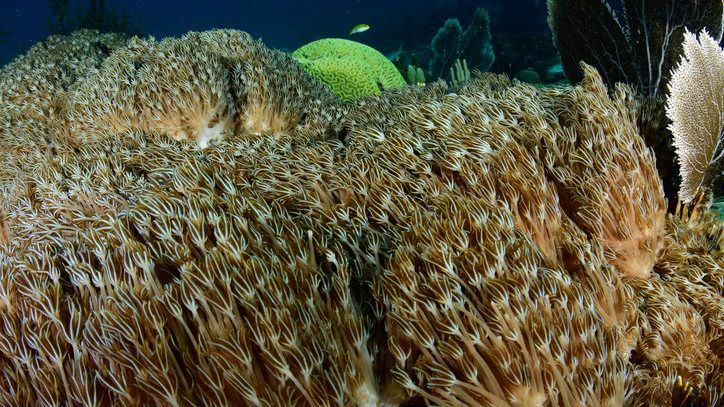HONOLULU, Hawaii — Since the summer of 2023, the Navy reports it has cleared over 33,850 square feet – nearly 3/4 the area of a football field – of octocorals, fast-growing soft corals, that were first seen near Bishop Point at the mouth of the channel to Joint Base Pearl Harbor-Hickam.
According to a news release, experts on the subject say the two non-native octocoral specials – Unomia stolonifera and Capnella cf. spicata – are popular with aquarium enthusiasts. However, the pulsating soft corals are illegal in Hawaii.
They are described as pulsating because of their gentle sway or pulsing movements, or in some species, the continuously opening and closing of feathery tentacles. Octocorals were first detected in Pearl Harbor in 2020 (scroll down to “Current Project: Pearl Harbor AIS”).
“As reef-building corals become more stressed from ocean temperature rise, they become more vulnerable and less able to compete with non-native introduced species like the fast growing, predator-free octocorals,” explained Nicole Olmsted, Navy Region Hawaii conservation manager, in the release.
An article by Margioni Bermudez on Science X’s phys.org website reported on the octocoral Unomia stolonifera that has killed off native reefs and taken over the ocean floor off Venezuela’s north coast and caused a drastic decrease in native fish stocks.
In collaboration with federal and state agencies, the Navy has found success in removing the invasive octocorals via two methods.
Of the total 33,850 square feet cleared since last summer, 19,956 square feet of octocorals were removed by hand. The challenge, according to Olmsted, is that divers must be careful to not allow broken pieces of the octocoral to drift into another location because they can easily regrow.
The remaining 13,900 square feet of octocoral was covered by a tarp to prevent nutrients and oxygen from reaching the invasive coral.
Signs posted last summer at several piers and accessible waterways around the southwestern side of Joint Base Pearl Harbor-Hickam advised the public that fishing is no longer permitted because of the invasive octocoral.
“We saw pieces of octocoral from neighboring areas drift in and start to reattach in the cleared areas within a couple of days,” said Olmsted.
The Navy urges the public to not illegally dump aquatic species from their aquariums into waterways or the ocean and to support the Hawaii Department of Land and Natural Resources’ “Don’t Let it Loose” campaign.
Visit the DLNR Division of Aquatic Resources website for information on how to report an aquatic invasive species and options instead of releasing.
Sarah Yamanaka covers news and events for Spectrum News Hawaii. She can be reached at sarah.yamanaka@charter.com.



